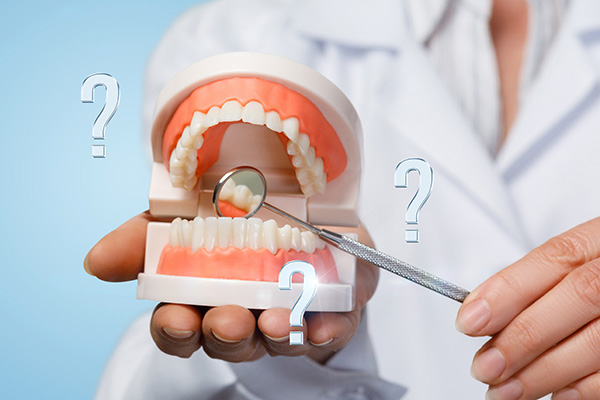Basic Restorative Procedures for a Damaged Tooth

You can have restorative dental procedures from your general dentist to replace defective or damaged parts of your teeth. Restorative procedures are used to replace broken or missing teeth and are among the most common treatments and procedures that dentists handle regularly. They restore the function and aesthetics of teeth and supporting structures while helping people feel confident about their smiles once again.
Fillings
At any given moment, a person's mouth has a pretty good amount of bacteria in it. Over time, this can erode the enamel and dentine making it possible for cavities to form. Fillings are used to cover up large defects in tooth structure caused by cavities and protect the tooth from further damage. The great thing about advancements in filling materials, they can now match the color of your teeth. This means that it is less obvious that you have fillings at all.
How is it done? The general dentist first removes the decay from the tooth. Next, is sterilization using an acid gel. Then, the dentist proceeds to restore the tooth structure with filling materials. The process is fairly simple and straightforward. You should expect your mouth to remain numb for some time following the treatment, and you'll want to avoid especially hot or cold foods.
Filling materials can be made from different substances. This includes:
- Glass ionomers
- Composite resin
- Gold
- Silver
- Plastic
- Mercury
Each has its advantages and disadvantages, which your dentist can go over with you. It's ideal to consider each pro and con so that you can make the most informed decision regarding your dental health.
Teeth straightening
Teeth straightening is a procedure used to correct misaligned or crooked teeth. Many people feel that teeth straightening not only repairs their smile but boosts their confidence. Teeth can be straightened using braces, veneers, clear aligners, retainers, and headgear depending on the condition of your teeth. The result is a beautiful smile that you can be proud of!
Braces, either metal, lingual or ceramic, are worn to slowly move the teeth in the proper position. They are worn for a certain period, and they gradually move the teeth into position. Clear aligners serve the same purpose but are more aesthetic as they are nearly invisible. Retainers are used after braces or clear aligners to retain the teeth in position once straightening is complete.
Veneers
Veneers are used to replace cracked, broken, or discolored teeth. The dentist can cement them directly on your teeth. It can be done by first taking an impression of your teeth, and constructing a veneer that fits the impression made before inserting it into your mouth.
Crowns
Crowns are artificial structures that closely resemble the crown of the natural tooth. They can be used alone for crown replacement procedures or used as part of dental implants and bridges. They can be made from different materials such as:
- Porcelain
- Stainless steel
- Zirconia
- Silver
- Gold
- Resin
How is it done?
You may be surprised to learn that the process for dental crows is incredibly thorough. Each step helps ensure that your smile is at its best. Here is the process for getting dental crowns:
- Tooth radiography is first done to examine the state of the tooth
- The general dentist proceeds to treat any active inflammation present
- Next, they administer anesthesia to numb your tooth
- Reshaping and filling take place so your tooth can fit the incoming crown
- The dentist takes an impression of your teeth and sends it to the laboratory to make a customized crown for you.
- On another appointment, the dentist places the crown over the damaged tooth.
Implants
Implants are restorative options for missing teeth or teeth that many people select. Implants are a more ideal option than dentures simply because they stay in place making it easier to take care of them. They have the crown (the visible part above the gum) and the implant body inserted into the jawbone and gum. It serves as the point of attachment. Implants replace the gap in dentition and prevent the buildup of food particles and subsequent inflammation.
Where to start with restorative procedures
As you can see, there is more than one way to restore your smile. Any of these options can serve as restorative measures for replacing missing or damaged teeth to get you back to looking and feeling your best. Talk to your dentist about which options are right for you. Ultimately, you'll walk away with a new and improved smile.
Request an appointment here: https://riverfallsfamilydental.com or call River Falls Family Dental at (812) 962-7342 for an appointment in our New Albany office.
Check out what others are saying about our dental services on Yelp: General Dentist in New Albany, IN.
Recent Posts
If you're looking for help from a general dentist to treat tooth decay, there are several things to consider before making an appointment with one to ensure your visit goes as smoothly as possible. First, you'll want to find the best dentist for treating tooth decay. The second thing you'll want to do is think…
Dentists recognize many types of toothaches. Each tooth pain carries a different intensity and meaning, and each type is caused by a different dental issue. You may not know what kind of ache you have right now. Understanding it, and getting in touch with a licensed dentist to alleviate your pain, are important steps in…
Wondering why a general dentist may recommend a deep dental cleaning? Read on to learn more. A general dentist may recommend a deep dental cleaning if the patient shows signs of a severe form of gum disease known as periodontitis. This condition can put the long-term health of the gums and jawbone in jeopardy and…
General dentistry refers to primary dental care performed on patients of all ages, whether children or adults. Under general dentistry, dentists perform several procedures, ranging from simpler efforts, such as dental examinations, to more complex processes, like restorative work. In general, it is recommended to visit the dentist at least twice a year, if not more…


